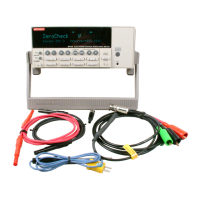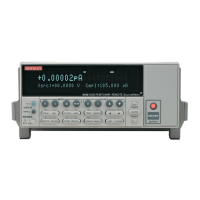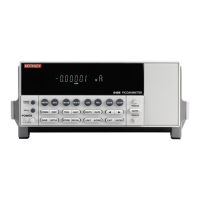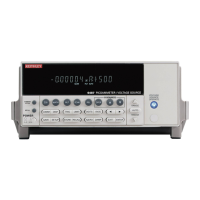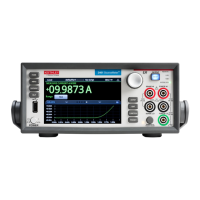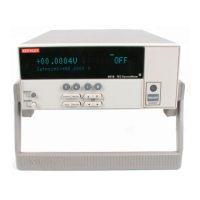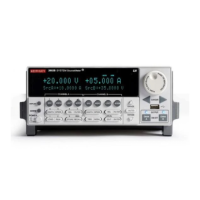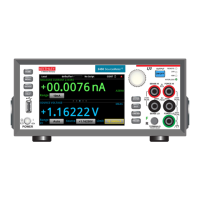Digital I/O, Analog Outputs, and External Feedback 11-13
Non-standard coulombs ranges
The Model 6514 has four coulombs ranges allowing it to measure charge between 10fC and
20µC. Charge measurements greater than 20µC can be obtained by placing the instrument in the
external feedback mode and measuring the voltage across an external feedback capacitor. See
the following subheading “External feedback procedure” for instructions.
Charge is related to capacitance and voltage by the formula:
Q = CV
where: Q = the charge in coulombs
C = the capacitance in farads
V = the voltage in volts.
Model 6514 display will read the charge directly in units determined by the value of C. For
example, a 10µF capacitor will result in a displayed reading of 10µC/V.
In practice, the feedback capacitor should be greater than 100pF for feedback stability and of
suitable dielectric material to ensure low leakage and low dielectric absorption. Polystyrene,
polypropylene, and Teflon dielectric capacitors are examples of capacitor types with these
desirable characteristics. The capacitor should be mounted in a shielded fixture like the one in
Figure 11-8.
To discharge the external feedback capacitor, enable zero check. The discharge time constant
will be given by: t = (10MΩ) (C
FB
). Allow five time constants for discharge to within 1% of final
value.
External feedback procedure
Use the following procedure to operate Model 6514 in the external feedback mode.
1. Enable zero check.
2. Connect the feedback element between the preamp out terminal and the input HI
terminal.
3. Enable external feedback as follows:
a. Press the XFBK key to access the external feedback menu.
b. Press the
or key to select ON and press ENTER.
4. Press the V key to select the volts function.
5. Disable zero check. The “XF” message will be displayed to indicate that the instrument
is in the external feedback mode. The display will show the voltage measured at the out-
put of the input preamplifier (PREAMP OUT).
NOTE To disable external feedback, press XFBK and select the OFF option.

